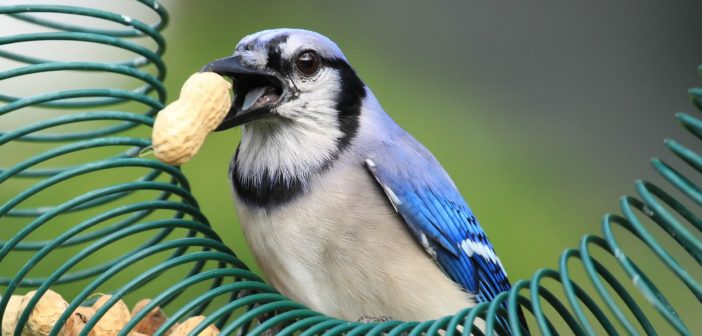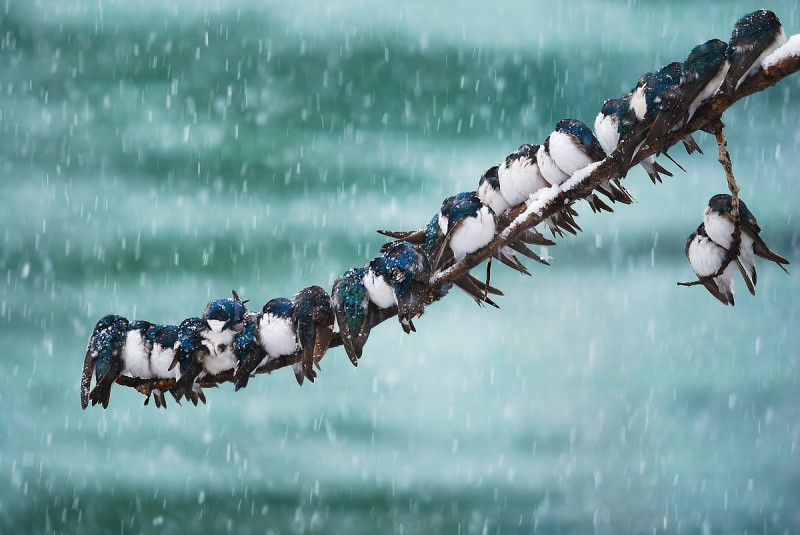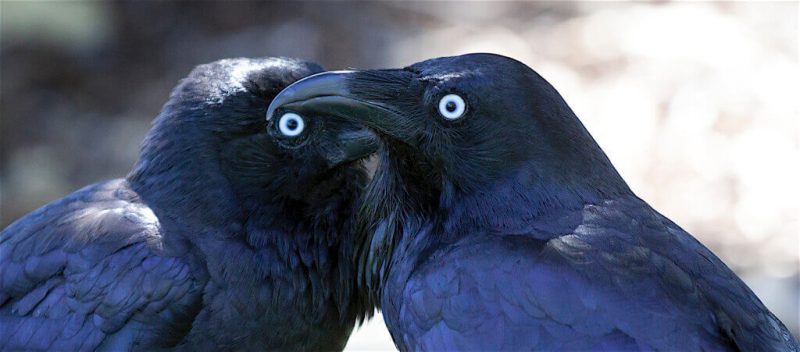Ah, the promise of spring! Bright skies and warm, whispery-soft winds have swept away the dull, gray boredom of winter. Flower buds are erupting in exuberant colors. Trees are cloaking themselves in a blissful palette of greens. Melodious trills and twitters of birds fill the air. Earth seems reborn, fresh, and fully alive, signaling all is well.
But, is it? Yes, for us, but maybe not for the birds whose cheery-sounding songs are disguising a struggle. You see, birds are compelled to sing in the spring—the changing season tells them it’s time to mate—but, otherwise, all may not be well. Here’s why.
In summer and fall, when flowers, vegetables, herbs, shrubs, and trees are in full bloom, laden with seeds, and protein-rich insects are everywhere, birds have a veritable smorgasbord of high-energy, muscle-building foods spread before them. Their bellies are full, and there’s food for their babies. All’s right with their world.
Then fall and winter come. Insects die or hibernate, and plants go dormant. Many seeds get buried under ice and snow, wash away in storms, or get buried in moist leaf litter that makes them moldy and inedible. What remains is devoured by birds and other wildlife through the winter. Competition for food gets stiffer and stiffer as the season wears on. Summer’s trove of food shrinks more with each passing day.
Freezing temps and hunger, a deadly combination
Birds have a high metabolic rate and must consume enough high-fat, high-calorie food during each day to maintain their body temperature through the coming bitter, sometimes sub-freezing night. As the food supply drops, a bird’s search for seeds and dead insects can become an all-day enterprise, every single day, to keep itself alive until the next morning. Winter temps are harsh, especially at night, and some hungry birds don’t make it.
By spring, last year’s food is nearly gone. The new season’s crops are just starting to grow, and insects are still scarce, too. What’s a hungry bird to do? It can’t do anything but struggle on through spring’s hardscrabble days until more food is available.
How we can help
- Put up birdhouses of various sizes. They provide more roosting places in the winter (and in the spring, after sanitizing, they’re ready to be used for nesting).
- Put out bird feeders.
Fifty-two million people in the United States feed wild birds.1 If you aren’t one of them, it’s easy to join in—and it so happens that spring is a perfect time to get started.
Feeding birds can be as simple as scattering some birdseed on the ground. It’s available at most large grocery stores, but check the label before buying. That’s because many inexpensive mixed-seed packages they offer contain large quantities of worthless seeds most birds won’t eat, even when they’re famished. Your local feed-and-seed stores will have the widest variety of their preferred foods.
You’ll also want to provide the right kind of seeds for the birds in your area. If you’re not sure, offer them the two types eaten by most birds: black oil sunflower seeds (in or out of the shell) and white millet. Many birds like shelled or unshelled peanuts, too. Suet is another favorite high-protein food. This page provides some guidance for you.
Putting the seed in a bird feeder is preferable because it keeps food drier and more sanitary. The kind of feeder is important, with several things to consider. Some birds feed only on the ground, and others will use a tubular feeder with small ports or a hanging-platform type. The size of the perch matters, too. So read this page for more information on that.
If you’re interested in identifying the birds visiting your new feeders, get a helpful field guide. Local bookstores and internet booksellers have a wide variety, including some specifically for your area or state. A pair of binoculars can be useful (inexpensive will do) for identifying birds.
Plan in winter for summer yard projects
Moving water delights birds
Native plants for wildlife
Woodpeckers that store their food and protect it, too!





